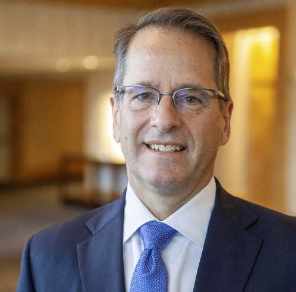By Rosemary Ford and Caitlin Agnew,
NH PBS and Granite State News Collaborative
Housing, school funding, gambling, and marijuana legalization. All these and more were tackled by the legislature this session. This week, Anna Brown, Research and Analysis Director for Citizens Count and host of the podcast $100 Plus Mileage, talks about what was and wasn't accomplished this legislative session .
Melanie Plenda:
Let's start with the unusual makeup of the house this session. How did having such a close split between Democrats and Republicans impact the legislature?
Anna Brown:
Well, originally, I suspected there would be a lot of partisan rancor. Maybe those hardcore on the right or hardcore on the left would be able to really drive a wedge on some issues. But I was wrong. Most of the hot button highly partisan bills were in fact set aside in favor of focusing on legislation that was more likely to get bipartisan support, or was a top priority for legislative leaders. So for example, the House Education Committee had many bills related to the so called Education Freedom Account Program, which allows students to take a per pupil share of state education funding and spending it on private or homeschool expenses. There were many bills related to that people on the left wanted to limit the program or increase oversight. People on the right wanted to expand eligibility or the mountains of money that were going into the program. The education committee actually recommended tabling the vast majority of those bills, which is a way to set aside a bill without having debate without having a full vote. And just basically moving on to other issues. There was also a really bipartisan lead from the majority and minority leaders, Jason Osborne and Matt Wilhelm. They started the session with a co-sponsor bill for marijuana legalization. And I think that, them working together really set the tone, “What about the amount of legislation that was affected by the makeup? How productive were they?”. There was slightly less legislation than I expected this year starting in the session. And I think that legislators edited themselves a little bit because they knew those very partisan fringe issues. We're not going to move forward. So it seems that there was like I said, a little bit of self editing going into the legislative session. Wow. That's interesting. So as you mentioned, the two party leaders Jason Osborne and Matt Wilhelm, work together
Melanie Plenda:
What about the amount of legislation was that affected by the makeup? How productive were they?
Anna Brown:
There was slightly less legislation than I expected this year starting in the session. And I think that legislators edited themselves a little bit because they knew those very partisan fringe issues. We're not going to move forward. So it seems that there was like I said, a little bit of self editing going into the legislative session.
Melanie Plenda:
Let's talk about the budget bill that was passed this session. Budget bills seem so innocuous, but they never are. So especially here in New Hampshire. Can you tell us about some of the highlights in that bill? And what does it mean for people?
Anna Brown:
Sure, this was an incredibly historic budget, because it was very popular among both Democrats and Republicans. It actually passed on a voice vote at one point, which basically means it was so popular that legislators could pass it just by saying yay, in a chorus, which was notably louder than the nays, so they didn't even need to count the votes. Overall, lots of wins. Here, there's a new school funding formula that increases state support for schools. There's more money for housing development, a pay raise for state employees, seven year authorization for expanded Medicaid, a repeal of the interest in dividends tax, and more. Those are just the big highlights. And then there are some smaller policy changes that didn't get as much news coverage, but are also really interesting. There's a new requirement for law enforcement to post notice on their websites before setting up an immigration checkpoint. This is particularly relevant near the northern border with Canada. There are also new limits on the governor's power to declare an emergency. That's a response to the ongoing emergency related to COVID-19, which went on for several months in I believe, even years, there's also $1 million to develop a civics tech textbook for New Hampshire students in grades K through 12. And lastly, the budget looks and lastly, the budget lifts some campaign donation limits as well.
Melanie Plenda:
What about housing, an issue plaguing New Hampshire and the rest of the country with the high cost of housing and the low stack available, what initiatives that the legislature put forward?
Anna Brown:
First of all, the state budget does include 25 million for the Affordable Housing Fund, and then an additional 10 million for the InVEST New Hampshire Housing Development Fund, which has fewer restrictions related to affordability. So the idea is you can just increase housing stock across the board. The most interesting provision to me, though, is what's called a housing Champion Program. This was very popular in the Senate, less so in the house. The idea is that if cities and towns adopt certain land use regulations, water infrastructure, public transportation, and so on, that helps the development of workforce housing, those towns and cities could get preferential access to state funds. So the idea is this is basically a carrot for the state to say, Hey, how about you work on that infrastructure and zoning to welcome more housing critics in the house, we're concerned that this was a way for the state to play favorites among cities and towns. But ultimately, the program was included in the budget because we all acknowledge housing is a crisis right now in New Hampshire.
Melanie Plenda:
One of the more controversial proposals in the legislature this session was the parental bill of rights that didn't get through to the governor's desk. What did those proposals entail and what happened?
Anna Brown:
There were two big parent rights bills, we had HB 10, which was the House version, and SB 272, which was the Senate version. HB 10 is interesting, because it actually made no mention of gender as introduced. It laid out many existing parental license rights and state law and then added some more enforcement, some oomph to those existing laws. SB 272, on the other hand, specifically would have required teachers to disclose information about a student's gender identity or sexuality if a parent asked, and opponents were concerned, this would threaten the privacy rights of students, especially if they had a hostile parent.
And that's one reason why SB 272 also had an exception if school personnel had quote, unquote, clear and convincing evidence that a student might be abused or neglected by a parent. Ultimately, both of these bills were defeated in the house, however, with the very slim majority, arguing that we need to protect the safety of students and their privacy. And this bill is inviting attacks on teachers and schools. Those were the general arguments, just a couple of Republicans broke with their party to vote against the bills, and the Democrats mustered enough attendance so that neither bill ultimately passed. It's interesting Governor Sununu did not really weigh in on either bill. He's open to them as a concept. But I think that if we're going to see these bills, or some version of these bills reappear next year, for example, in the state senate, then I would think they probably need the support of Governor Sununu to really get across the finish line.
Melanie Plenda:
And there were also bills addressing gender equality. This session, though nothing was passed. So what were some of the proposals discussed and how might they come up again,
Anna Brown:
There were actually several bills that were retained in committee in the House, which means that these committees can work on the bills over the summer, and then they'll issue a recommendation in the fall. So then there will be a vote often right away when legislators come back in January. So four of those bills for example, HB 264, would allow a sex chain on a birth certificate without a court order. hB 368 would add protections for gender affirming health care, HB 396 would protect differentiation between male and female sex and HB 619 would ban gender transition, care for minors and ban gender identity conversations in school. So as I said, the retaining committee, these bills aren't dead. They are absolutely coming back next year. So I think the parent Bill of Rights was just the very tip of this conversation, and there's going to be a lot more next year.
Melanie Plenda:
So the perennial favorite marijuana legalization came close this session, though all the states around New Hampshire are legalizing cannabis. It's not legal here. Despite the fact as you mentioned, it had support of both party leaders. What does that mean for the next session? Do you think
Anna Brown:
There was a real game changer near the end of the session, when Governor Sununu announced ‘surprise surprise’ he would support marijuana legalization if it was a state run model similar to how we do our liquor stores. So there's a study committee of that issue over the summer. There's also a bill that's in a House committee that would set up state run marijuana stores basically. So this issue is absolutely going to move forward. And the house we know is on board. The House has voted for all sorts of versions of marijuana legalization state run private with taxation legalization without any sales. So now the question is really whether the Senate will get on board and I do think they will have a lot of pressure now that Sununu has finally said with the right bill, this is the way we can do it.
Melanie Plenda:
Let's look ahead to the next session. What are your predictions? What do you think will come up again, there?
Anna Brown:
I'm definitely looking at the housing and childcare issues, because there were those special committees that were set up. We've also touched on some obvious ones like marijuana legalization, gender issues. But one thing that didn't get as much attention this year as I thought it might was energy related bills. Yes, there were some bills that went forward related to bio power related to residential solar panels related to what appears on your electricity bill. But I'm very interested in what the state is going to do related to the renewable portfolio standard, for example, which is set to expire in 2025. Or is there going to be something related to Reggie, the Regional Greenhouse Gas Initiative, something else with offshore wind? Let's not forget a year ago, we were all hit with a huge increase in our electricity bills. And it looks like those bills are going to be coming down for most of us in August. Now that there's new rates coming in, but like I said, this was an issue that I expected more on. So I think that they'll dig in next year.
The State We’re in a weekly digital public affairs show is produced by NH PBS and The Marlin Fitzwater Center for Communications. It is shared with partners in the Granite State News Collaborative, of which both organizations are members.




























